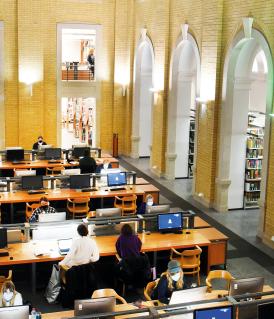Dual vocational training

What makes Germany’s dual system of education and training different is the way it combines theory and practice. Germany’s low rate of youth unemployment compared to its European peers is thanks in part to this system.
The dual system of education and training differs from purely classroom-based learning that represents the entry point into working life in many countries. Students spend three to four days a week learning the practical elements of a profession in the workplace, with specialist theoretical teaching at vocational college on the other day(s). It generally takes between two and three-and-a-half years to complete dual vocational training Vocational training Dual vocational training is quite unique internationally. After leaving school, many young people follow one of more than 300 state-recognised apprenticeship training programmes under the dual system. This entry into professional life differs from vocational training based only in colleges such as… Read more › , and trainees are paid during this time.
Around a million young people in Germany are training on officially recognised training programmes. In 2024, they were able to choose from 328 different careers. In 2023, some 479,800 people signed new dual vocational training contracts.
Vocational education in Germany is supported by many stakeholders who also ensure training is high quality. For example, chambers of commerce offer advice to firms providing on-the-job training and assess their facilities, while also organising assessments and examinations. Trade unions and employers’ associations negotiate the remuneration for trainees and help define standards for professional training. The state funds and oversees the public vocational college system. It also helps unemployed and disadvantaged young people to get into training.
The german model – attracting interest around the world
The integration of theoretical knowledge and practical professional experience is in great demand among many companies. There is also great international interest in the system, and many countries are currently adapting the German dual vocational training Vocational training Dual vocational training is quite unique internationally. After leaving school, many young people follow one of more than 300 state-recognised apprenticeship training programmes under the dual system. This entry into professional life differs from vocational training based only in colleges such as… Read more › system. In response to high levels of demand, the Federal Government Federal Government The Federal Government and cabinet is made up of the Federal Chancellor and the Federal Ministers. While the Chancellor holds the power to issue directives, the ministers have departmental powers, meaning that they independently run their respective ministries in the framework of those directives… Read more › has set up the German Office for International Cooperation in Vocational Education and Training (GOVET) as a central point of contact.
GOVET handles all inquiries about the German vocational training system, many of which come from abroad. As part of its work with partners around the world, the Federal Government supports partner countries with developing their own vocational training systems, thereby improving opportunities for young people to become qualified in a profession. The framework for this is the Federal Government’s strategy for international cooperation on vocational education and training, which was adopted in 2013 and updated in 2019.


